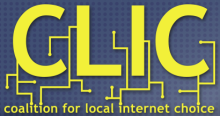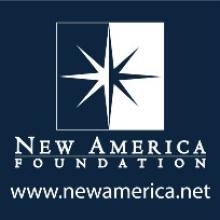
Fast, affordable Internet access for all.


As communities across the country realize the big corporate providers may never bring the kind of connectivity they need, they are considering the potential of public-private partnerships. A new report by Joanne Hovis, Marc Schulhof, Jim Baller, and Ashley Stelfox, takes a look at the issues facing local governments and their private sector partners.
The Emerging World of Broadband Public-Private Partnerships: A Business Strategy and Legal Guide examines the practical considerations when investigating PPPs for better connectivity. The report was published by the Coalition for Local Internet Choice (CLIC) and the Benton Foundation.
The report offers case studies from several networks to illustrate the findings. Among others, the authors write about Westminster, Maryland; Urbana/Champaign, Illinois; and Holly Springs, North Carolina. Each community has collaborated with the private sector in some unique partnership.
The Benton Foundation sums up the three models explored in the report:
As communities across the country realize the big corporate providers may never bring the kind of connectivity they need, public-private partnerships (PPPs) are sprouting up everywhere. A new report by Joanne Hovis, Marc Schulhof, Jim Baller, and Ashley Stelfox, takes a look at the issues facing local governments and their private sector partners.
Interjection from Christopher Mitchell: Partnerships are emphatically not sprouting up everywhere. To be more correct, enthusiasm around the idea of partnerships is sprouting up in many places. But compared to the hundreds of municipal networks currently in operation, we could maybe name ten partnerhips in existence today.
The Emerging World of Broadband Public-Private Partnerships: A Business Strategy and Legal Guide examines the practical considerations when investigating PPPs for better connectivity. The report was published by the Coalition for Local Internet Choice (CLIC) and the Benton Foundation.
The Benton Foundation sums up the three models explored in the report:
- Private investment, public facilitation – The model focuses not on a public sector investment, but on modest measures the public sector can take to enable or encourage greater private sector investment. Google Fiber is the most prominent example, but there is significant interest among smaller companies
- Private execution, public funding – This model, which involves a substantial amount of public investment, is a variation on the traditional municipal ownership model for broadband infrastructure—but with private rather than public sector execution.
- Shared investment and risk – In this model, localities and private partners find creative ways to share the capital, operating, and maintenance costs of a broadband network.
The authors also share expertise on a range of legal topics that often arise when working with a private sector partner. They share their years of experience with matters such as confirmation of authority at state and local levels, project planning, and common issues related to negotiating the agreement.
Is your community considering a public private partnership to improve connectivity for businesses and residents? Will you be attending the Broadband Communities Economic Development Conference in Lexington this September? If you answered 'yes' to those two questions, you should attend CLIC's half-day event on Friday, September 18th.
Spend the morning breakfasting with telecommunication attorney Jim Baller and Joanne Hovis from CLIC along with Maura Corbett, CEO of Glen Echo Group and Heather Gold, CEO of FTTH Council Americas.
The rest of the agenda from a CLIC email invitation:
An Extensive CLIC Paper on the Key Business and Legal Issues in Public-Private Partnerships :
Moderator: Jim Baller - President, CLIC
Speakers:
The Private Sector’s Perspective :
Speakers:
The Public Sector’s Perspective :
Moderator: Catharine Rice - Project Director, CLIC
Speakers:
If you were not able to attend Freedom to Connect in New York on March 2 - 3, you can now view archived video of presentations from Chris and others.
Now that the FCC has made a determination that may change the landscape of Internet access, it is time to consider the future of municipal networks. In this discussion, Chris discusses passive infrastructure, including dark fiber and open access models as a way to encourage competition on the local level. Chris also looks at financing municipal networks in a fashion that takes into account public benefits created by fiber. He suggests steps elected officials can take now that will contribute to long term ubiquitous access in their communities.
You can also watch videos from other presenters including Joanne Hovis, Hannah Sassaman, and Jim Baller at the F2C: Freedom to Connect 2015 Livestream page.
Chris's presentation is posted here and runs just over 20 minutes:
Time and again, we share economic development stories from communities that have invested in fiber networks. A new article by Jim Baller, Joanne Hovis, and Ashley Stelfox from the Coalition for Local Internet Choice (CLIC) and Masha Zager from Broadband Communities magazine examines the meaning of economic development and the connection to fiber infrastructure.
Economists, advocates, and policymakers grapple with how to scientifically measure the link between the two but:
As Graham Richard, former mayor of Fort Wayne, Ind., observed, “From the point of view of retaining and gaining jobs, I can give you example after example [of the impact of broadband]. … What I don’t have is a long term, double-blind study that says it was just broadband.” But, “as a leader, sometimes you go with your gut.”
In addition to presenting examples from a number of communities such as Chattanooga, Lafayette, and Santa Monica, the article nicely summarizes key information from recent reports on links between broadband and real estate value, household income, and local economic growth.
As the authors note:
Communities increasingly recognize that fiber networks also provide critical benefits for education, public safety, health care, transportation, energy, environmental protection, urban revitalization, government service and much more. But only in revitalizing and modernizing local economies and creating meaningful, well-paying jobs do community leaders, businesses, institutions and residents consistently find common ground. In short, economic development and job creation can fairly be called the “killer app” for local fiber networks.
Worth reading and sharing!
Jim Baller and Joanne Hovis, two leading voices in the drive to restore local authority, recently spoke with Craig Settles on Gigabit Nation. Baller and Hovis, the President and the CEO, of The Coalition for Local Internet Choice (CLIC) spent about an hour discussing how CLIC is finding ways to help businesses, individuals, and public entities work with elected officials to retain or regain the right for local authority.
From the Gigabit Nation website:
Listeners gather insights to working with willing incumbents, developing public-private partnerships, establishing their own networks when necessary, or creating other inventive approaches that work for their communities. Both guests share their many years of experience in helping communities obtain the many benefits of advanced communications capabilities. Baller and Hovis formed CLIC to give voice to the wide range of public and private interests that support local choice and to provide communities practical advice and the tools necessary to prevent new state barriers from being enacted and to remove existing barriers.
New America Foundation's Open Technology Institute will host "Localism Over Consolidation: An Exploration of Public Broadband Options" from 9:30 - 11 a.m. on May 28th. Chris will be participating in the discussion; if you can't make it to DC, the event will be live streamed.
Conversation will focus on different approaches to improve connectivity and community strategies to make those approaches successful.
From the event page:
Today, more and more communities are thinking of broadband as a local issue. Even large cities like Baltimore, Seattle and Los Angeles have recently begun public discussions about ways to improve broadband services and what role the local government could play in that improvement. Current technology policy debates about net neutrality and the potential Comcast-Time Warner Cable merger mean it is more important than ever that local governments play a more active role in ensuring their communities do not get left behind in the digital age.
Joining Chris:
Sarah Morris, Senior Policy Counsel at the New America Open Technology Institute will moderate. You can sign up for the event and livestream on the 28th at the event page.

The one thing communities cannot do is sit on the sidelines. Even the process of evaluating whether a public network is appropriate can be beneficial to community leaders as a means to better understand the communications needs of their residents, businesses, and institutions and whether existing services and networks are keeping pace. The purpose of this report is to enable communities to begin the evaluation of their broadband options. The report begins with an overview of different network ownership and governance models, followed by an overview of broadband technologies to help potential stakeholders understand the advantages and disadvantages of each technology. It then provides a brief summary of several different business models for publicly owned networks. The final two chapters focus on the potential larger local benefits and the risks of a publicly funded broadband project.

In September, I joined the keynote lunch panel at the annual NATOA Conference to discuss what local governments can do to improve Internet access. Joanne Hovis moderated a discussion between Rondella Hawkins of City of Austin, Milo Medin of Google, and myself.
I have embedded the video below so it starts with the panel discussion. However, if you go back to the beginning, you will also be able to watch the annual award presentations, including one to Longmont in Colorado, as well as Milo Medin's 10 minute presentation prior to this panel discussion.
We discuss many important issues, particularly the various actions local governments can take to either build their own networks or to make the community more tempting to others who might build a network.